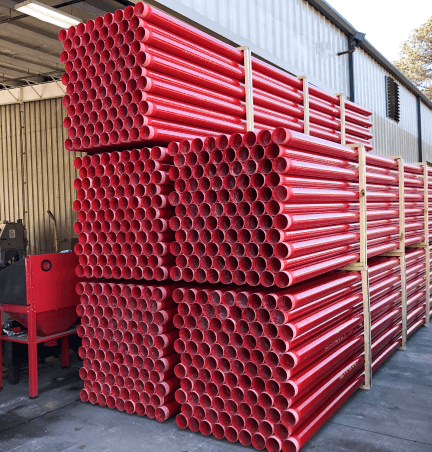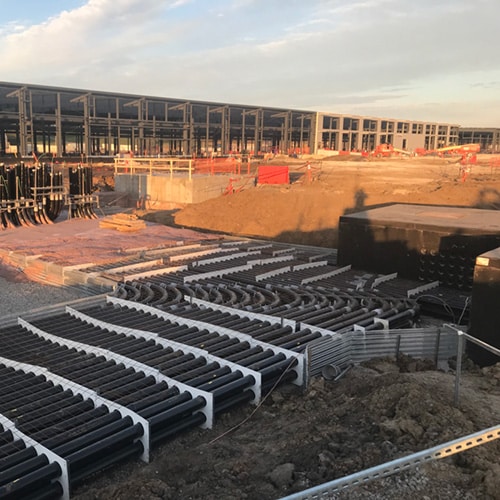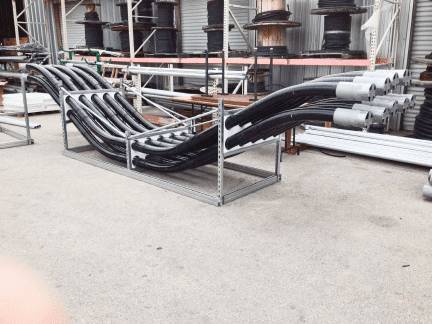By Scott Patchan
Estimating labor costs is essential – labor can have a significant impact on an electrical project’s bottom line and poor planning can risk throwing projects off-timeline and off-budget.
Most important to accurately estimate labor costs is knowing the approximate hours required for project completion. To determine an estimate of hours, first determine quantities of materials needed. This will require a thorough review of specifications and drawings.
Selecting Materials
While calculating materials costs might be as easy as placing a quick call to a preferred supplier, first identifying the proper substrates may be a little trickier. Typically materials are defined within a project’s specifications, however availability, pricing, and project manager preferences may result in alternate options. When subbing out materials, it is important to consider factors beyond raw material cost such as ease of field handling, weight, and labor hours required for installation.
In recent years, engineers, electrical contractors, and project managers have made a shift from traditional GRC or PVC conduit for their industrial and commercial electrical projects to more cost-effective materials like fiberglass (RTRC) conduit.
Environmental Considerations
The best conduit for an electrical project will depend heavily on the environment of the application. Is it an indoor or outdoor installation? Will the area frequently be wet or exposed to harsh chemicals, as is the case in waste water treatment facilities and chemical plants? Is the environment corrosive or hazardous enough to require XW type or Class I, Division 2 approved conduit, and will UV exposure, weather, or potential fire exposure need to be considered?
The answer to each of these questions will help determine whether metallic or nonmetallic conduit is right for a project. Some of the more common electrical conduits include:
- Fiberglass conduit (RTRC)
- PVC SCH 40
- PVC SCH 80
- EMT
- Galvanized rigid conduit (GRC)
- PVC-Coated Steel
- Aluminum
- Stainless Steel
Understanding Labor Rates
It is important to know the project material before calculating labor costs, as labor installation rates (normal installation hours per 100 feet of material) are specified by the NECA’s Manual of Labor Units by material. A variety of factors influence the estimated time required to install electrical conduit including:
- Ease of field handling
- Product weight
- Support span distances

Additional factors that can affect labor pricing for electrical cost estimates include:
- Onsite working conditions
- Project complexity
- Joining systems required
- Productivity levels and experience of crews
- Availability of labor local to the project
- Code violations or other corrections identified during inspection
Estimating Tools
Fortunately, several tools exist to make calculating electrical labor costs for conduit much easier, including Champion Fiberglass’ suite of calculators:
1. Electrical Conduit Calculator, which estimates both materials and labor. Easily enter the conduit diameter to be used, length to install, and average hourly labor rate to compare pricing across common conduit substrates including PVC SCH 40, PVC SCH 80, EMT, PVC-coated steel, GRC, aluminum, rigid steel conduit, and fiberglass (RTRC).

2. Elbow Calculator, which estimates material and labor costs for the elbows required. Once a quantity takeoff is complete, enter the number of elbows required, as well as conduit diameter and elbow radius to compare estimated project costs for various, common substrates including PVC-coated steel, GRC, aluminum, stainless steel, and fiberglass (RTRC).

3. Epoxy Calculator, which calculates the number of conduit joints and adhesive cartridges a project requires, providing a more complete project estimate.

Why Champion Fiberglass®?
On a recent data center project in Virginia’s Data Center Alley, the electrical contractor reduced labor costs by an estimated 60% by using Champion Fiberglass conduit. The lighter weight made it easier to maneuver on site, especially in tight and elevated areas. Increased distance between supports and prefab assembly by Champion Fiberglass further increased labor savings.
For help calculating electrical labor costs of conduit, or for a fiberglass (RTRC) price list, contact a local Rep.












